I’m having breakfast before I walk through the Outdoor Retailer Show in Salt Lake City, Utah in early August. The conversation at the table next to me is a combination of English and Chinese. I’m reviewing my media appointments for the day so the talk to my right is background noise until I hear the word wader. Not the waiter pouring coffee in cups, but wader. The kind I wear when I fish. I stop drafting questions for upcoming interviews and start listening to the wader discussion.
The English-speaking businessman wants to decrease the price tag customers see on his waders without decreasing his profit margin. The Chinese-speaking businessmen, there are two, have the solution. Design the uppers in China. Just the uppers. Leave the waders footless. Ship them to the U.S. then glue the boots to the bottom. There are boot gluers in Los Angeles for this exact reason. This is cross-continent collaboration. You see it and hear it down every aisle at the show.
By lunchtime, I’m with L.L. Bean director Mike Gawtry. He’s in charge of innovation and testing. Collaboration is all over L.L. Bean products. From beanies with lights to boots without laces. L.L.Bean’s one-handed closure instead of two-handed tie is called the boa system, or ‘crank’ as I like to call it. It’s the new tightening dial you see on straps and shoes.
“If you can look at something people are used to doing like tying their shoe and you reinvent that function in a way that’s simpler, that’s a big jump in innovation,” Gawtry says. “You’ve solved a big problem for customers that they didn’t even know they had. That’s a big deal.”
I ask Gawtry about the boot gluers. L.L. Bean isn’t using them yet, but they are looking and here’s why; booted waders are considered waterproof footwear. The duty on footwear coming into the U.S. is 37.5%. The duty on stocking foot waders, which are not footwear, is 9%. A 28.5% difference.
Shipping partially prepared waders across the ocean to be finished in the U.S. is a cost saver. That’s why I heard cross-continent collaboration at the table next to me this morning.
“From an innovation standpoint, the show is fundamental to our process,” Gawtry says. “We meet with vendors, collaborate and come up with something that really engages customers.”
In the afternoon, I’m at Unifi’s booth. Unifi created Repreve in 2007. Repreve is yarn made out of plastic bottles. Thirty percent of Unifi’s commodities are made with Repreve. You’re wearing 36 plastic bottles via Repreve when you zip up inside The North Face Denali jacket.
“Our goal is to be 100% recycled,” says Christine Spiegel, Unifi global marketing manager. “It’s our ultimate corporate goal to be landfill free. Anywhere we can sustain and eliminate our carbon footprint, that is what we do.”
Collaboration is evident on the grass leading up to the convention center too. That’s where the show’s tent city is. Every shape and size of shelter is staked to the ground and hanging in the trees. Hammocks are trending high at this year’s show. Camp Chef is in tent city. They offer everything you need for outdoor eating, but they’re with the tents. Why? Springbar collaborates with Camp Chef to mass produce its canvas tents. They share a licensing agreement. Both companies are based in Utah so the partnership works well. More collaboration.
Back on the main floor, Ronda Wagner, Granite Gear national sales manager, is touting backpacks. She has more than 100 appointments during the show. Most are with buyers who will put her pack in their shop for you to buy. Corporate collaboration for customer benefit.
It’s impossible for me to see every invention at this show and I won’t talk to everyone here, but when I zoom out and view the showroom floor from the glass room above, I see movement. A lot of movement toward a common goal. Getting people outside. Everyone at this show comes inside to see what will go outside with you next year.
“This is an opportunity for everyone to not only come together to do business, but to build relationships,” says Kate Lowery, Outdoor Retailer Show director of public relations. “From a community standpoint, it feels strong.”
There are 1,626 exhibitors at this show. Inside the 556,000 square feet of future goods, 333 exhibitors are fishing related. Waders are only one product among thousands. I don’t see the boot gluers here, but they are being talked about and I find them to be an intriguing element. They represent what will be done to get you outside at a price point you can tolerate. They demonstrate collaboration across continents in pursuit of the great outdoors.







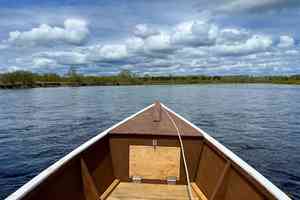


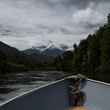









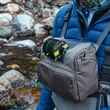
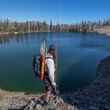



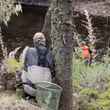

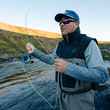
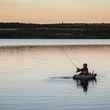

Comments